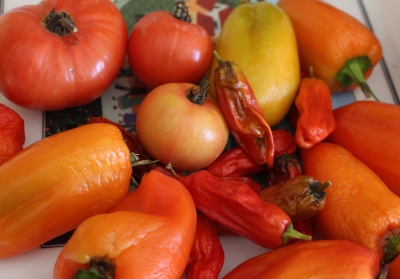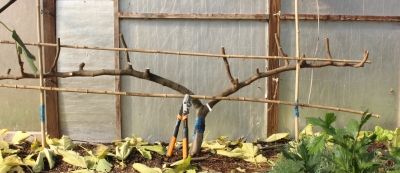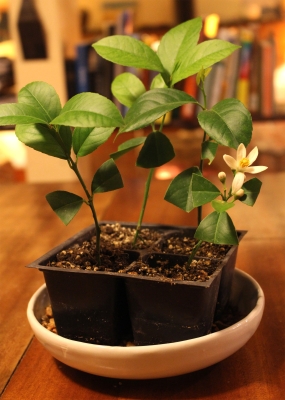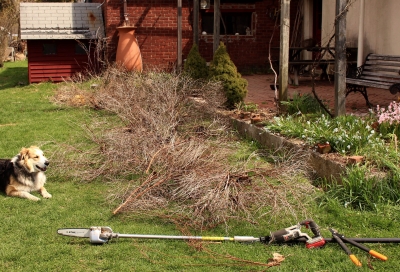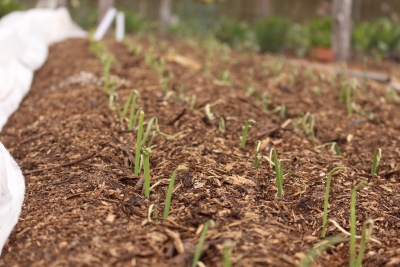Doing Good with Saw and Lopper
Fruitful Pruning
To begin, I gave the bush in front of me a once over, eyeing it from top to bottom and assuring it that the next few minutes would be all to its good. It was time for my blueberries’ annual pruning, the goals of which were to keep them youthful (the stems, at least), fecund, and healthy.
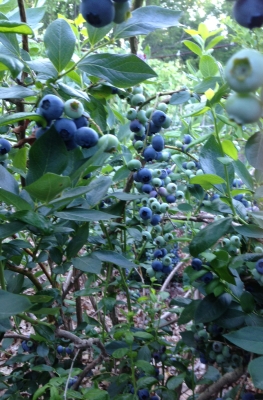
Blueberries galore
I peered in at the base of the plant, eyeing now the thickest stems. Blueberry bushes bear best on stems up to 6 years old, so the next move was to lop or saw any of these stems — usually only 3 or 4 of them, more on a neglected plant — as low as possible.
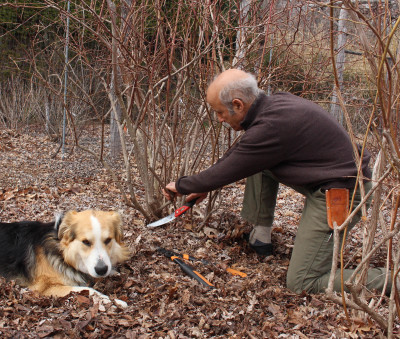
Sammy & me, pruning blueberries
To keep track of the ages of individual stems, I mark off the age of them each year with a Sharpie. Just kidding! The thickest ones are the oldest ones, and 6-year-old stems are generally an inch or more in diameter on healthy bushes.
Removing those stems that are over the hill frees up space for younger stems to develop. Each year blueberry bushes send up new sprouts from ground level, usually a few too many of them. They need to be thinned out so they don’t crowd each other as they age. I leave a half dozen or so of the most vigorous new sprouts, lopping all others to the ground.
That’s pretty much all there is to pruning a blueberry bush. With the very oldest and some of the very youngest stems cut to the ground, the bulk of pruning the bush is finished.
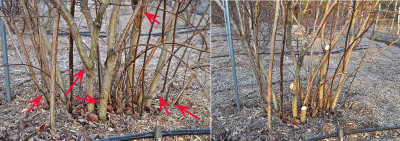
Blueberry bush, before & after pruning
I’ll also snip off any dead stems, remove a branch here and there where they are congested, and shorten any stems that will arch to the ground when laden with fruit.
That’s it. Finished, except to step back and admire my handiwork.
And Now, For Other Shrubs
The same pruning done on blueberry could, in essence, be applied to lilac,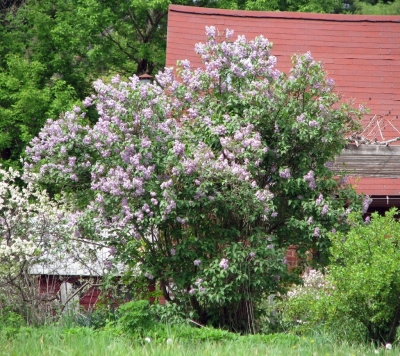 forsythia, mockorange, hydrangea, and any other informal shrub. This technique is known as rejuvenation pruning because, over time, the above ground portion of the shrub is annually rejuvenated. In the case of blueberry, the roots live unfettered year after year but the bush never sports stems more than 6 years old. A perennially youthful blueberry bush can go on like this, bearing well, for decades like this.
forsythia, mockorange, hydrangea, and any other informal shrub. This technique is known as rejuvenation pruning because, over time, the above ground portion of the shrub is annually rejuvenated. In the case of blueberry, the roots live unfettered year after year but the bush never sports stems more than 6 years old. A perennially youthful blueberry bush can go on like this, bearing well, for decades like this.
Not all shrubs perform best on stems up to 6 years old. Some, such as kerria, snowberry, rambling roses, and summer-bearing raspberries perform best on 1-year-old stems. So every year those 1-year-old stems are lopped to the ground and the youngest stems are thinned out.
Some shrubs, such as butterfly bush, everbearing raspberries, and red twigged dogwood, perform best on new stems. In this case, the whole plant gets lopped to ground level each year. (Everbearing raspberries actually bear on both new stems and on 1-year-old stems, so could be pruned as in the previous paragraph. That takes more time but does yield a midsummer crop on the 1-year-old stems and a late summer and fall crop on the new stems.)
At the other end of the spectrum in shrub pruning are witch hazel, tree peony , rose-of-sharon, climbing roses, and flowering quince. These shrubs are among those that perform well year after year on the same old, and always growing older, stems. They also grow few or no suckers each year. The upshot is that thesis shrubs are the easiest to prune: Don’t.
, rose-of-sharon, climbing roses, and flowering quince. These shrubs are among those that perform well year after year on the same old, and always growing older, stems. They also grow few or no suckers each year. The upshot is that thesis shrubs are the easiest to prune: Don’t.
I detail the ages of stems that are “keepers” for every shrub, plus other details in pruning all kinds of plants, in my book The Pruning Book.
Getting Formal
All this pruning refers to informal shrubs. For formal shrubs, such as the privet hedge near one edge of my yard, I put aside the lopper, pruning shears, and pruning saw, and get out the hedge trimmer. Shearing all the youngest twigs, working, this time, higher in the bushes rather than down near ground level, elicits repeated branching which results in dense growth.
To keep this formal hedge clothed from head to toe in leaves, I keep the row of plants narrower towards their upper portions. This lets sunlight beam down on the shrubs from top to bottom.

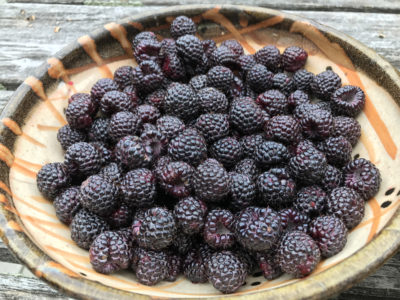
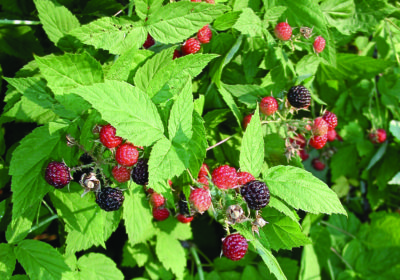

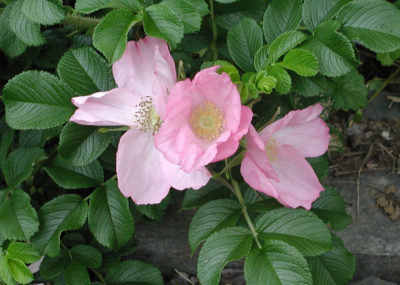 Another rose I grow, rugosa rose, won’t get any pruning this summer. Besides its nonstop, fragrant flowers, rugosa rose also bears nice hips, that is, fruits. The hips make excellent jam and are rich in vitamin C. Pruning in summer would remove spent flowers which then couldn’t go on to swell into fat hips.
Another rose I grow, rugosa rose, won’t get any pruning this summer. Besides its nonstop, fragrant flowers, rugosa rose also bears nice hips, that is, fruits. The hips make excellent jam and are rich in vitamin C. Pruning in summer would remove spent flowers which then couldn’t go on to swell into fat hips.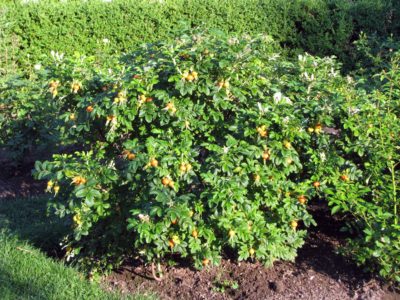



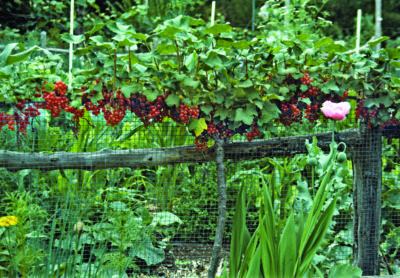
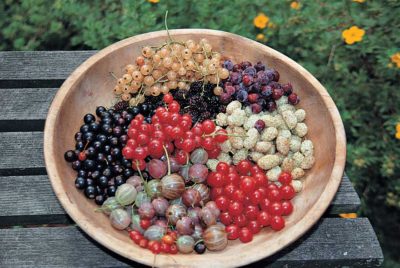
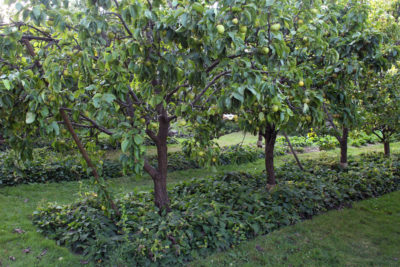

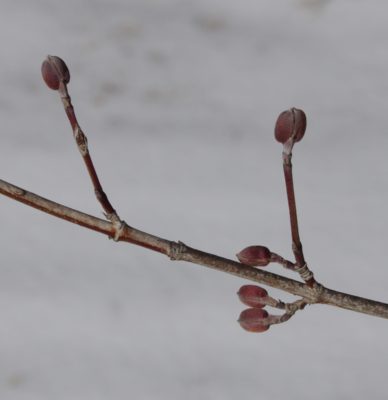
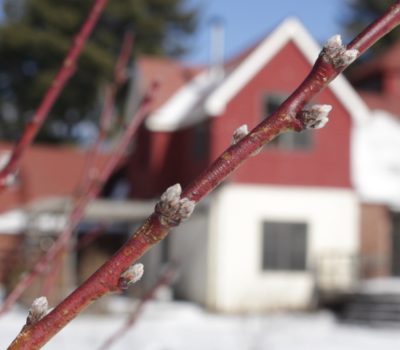
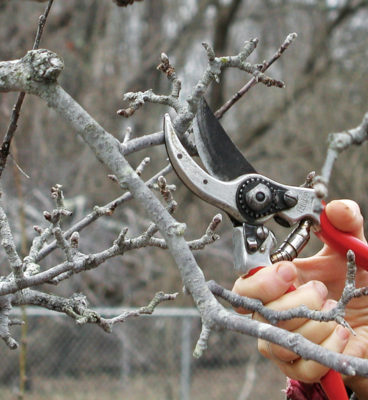
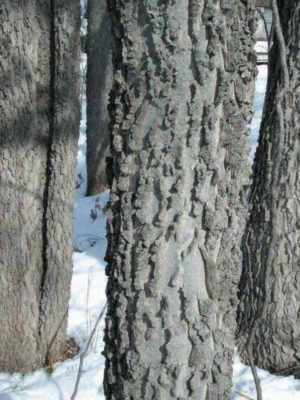
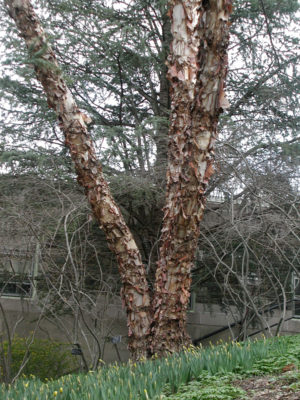
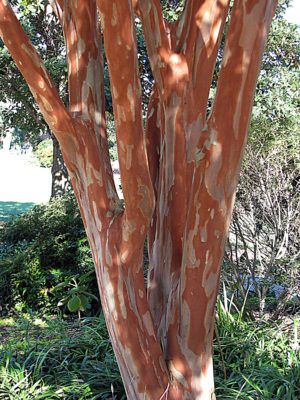
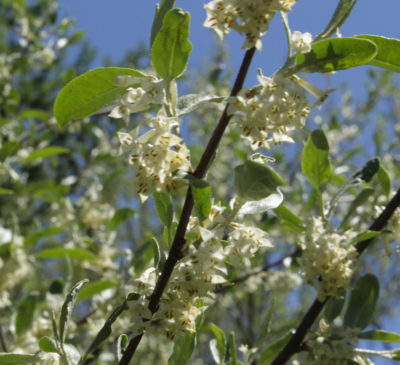
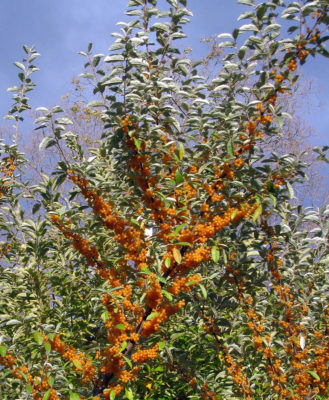 (Autumn olive is often confused with Russian olive, E. angustifolium, a close relative that is more tree-like, less invasive, and with sweet, olive-green fruits. Another equally attractive, fragrant, tasty, and soil-building plant is gumi, E. multiflora, not well known but closely related to the other “olives.”)
(Autumn olive is often confused with Russian olive, E. angustifolium, a close relative that is more tree-like, less invasive, and with sweet, olive-green fruits. Another equally attractive, fragrant, tasty, and soil-building plant is gumi, E. multiflora, not well known but closely related to the other “olives.”)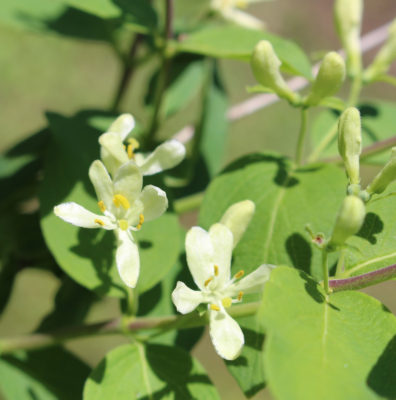

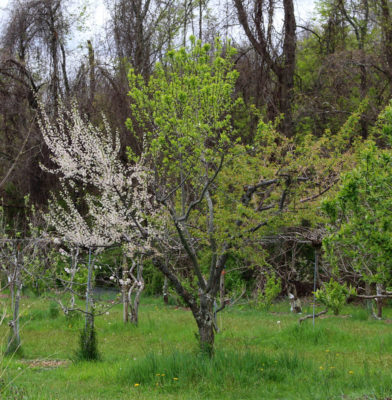 Offer an explanation and, if correct, you’ll be in the pool of readers, one of whom, randomly selected, gets sent a free copy of my book
Offer an explanation and, if correct, you’ll be in the pool of readers, one of whom, randomly selected, gets sent a free copy of my book 
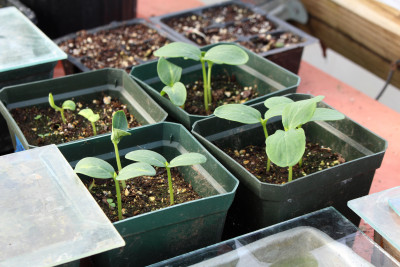
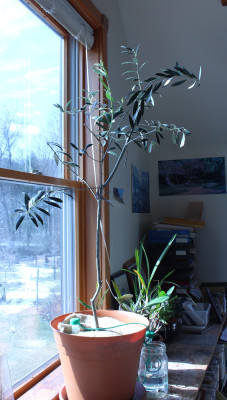
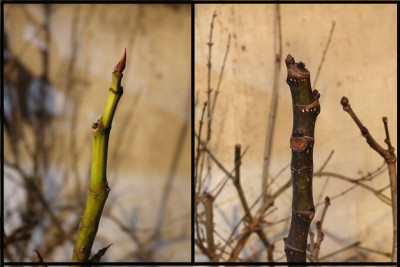 Temperatures stay relatively consistent and cool (40-45°F.) in my basement and it’s dark down there, so the plants generally stay dormant until sometime, probably next month, when I can set them outside. Keeping the plants slightly on the dry side also helps hold back growth.
Temperatures stay relatively consistent and cool (40-45°F.) in my basement and it’s dark down there, so the plants generally stay dormant until sometime, probably next month, when I can set them outside. Keeping the plants slightly on the dry side also helps hold back growth.